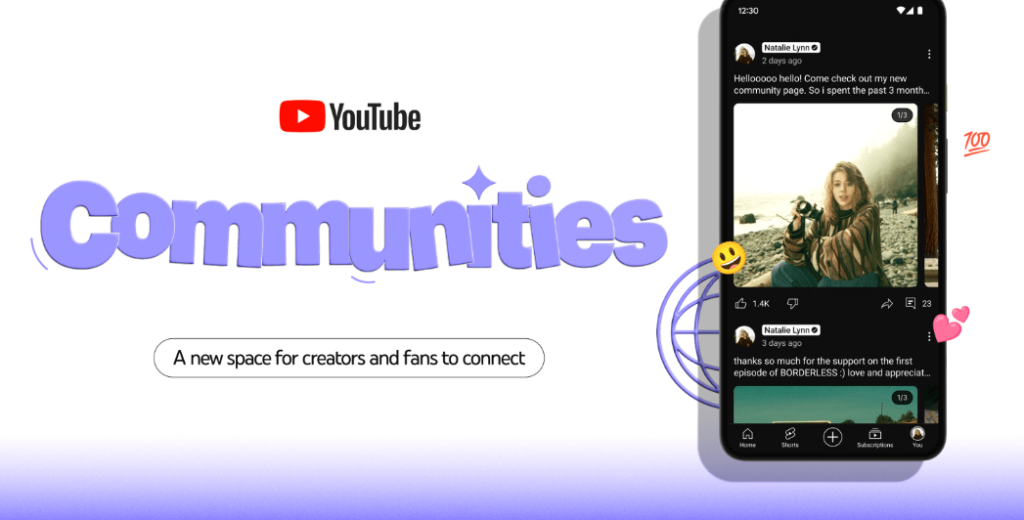Similar to Discord, YouTube have launched a platform called Communities. The aim is to allow fans and content creators to interact with each other.

YouTube recently announced a new space for content creators and their fans to connect. Similarly to Discord, YouTube welcomed the arrival of Communities during their Made On YouTube event held recently. The space will be built into each creator’s channel.
The hopes behind this new addition, is that creators won’t need to use platforms like Discord or Reddit when continuing the discussions from their videos. Instead, they will be able to communicate with their fans, directly from their channel.
Communities allow a safe space for YouTube viewers to comment and interact with others watching the same videos. They can build their very own community, like the name suggests. Viewers can share their thoughts and make friends through shared interests.
For now, Communities can only be accessed by those who pay for a YouTube subscription. It allows fans more involvement than the typical commenting under a video. Creators can become part of their viewer’s world in a more inclusive way.
YouTube Communities
Bangaly Kaba, the director of Product Management at YouTube stated, “Communities is a place where you can choose to create that with your fans. This is a place where you and your fans can come together to build even deeper connections.”

Conversation can spark, and genuine connection can be built upon. Creators have the control over what’s said. They can ban certain conversations, and have the power to keep their space a safe one. The layout is said to be similar to other competitors, a forum style.
Despite being similar in concept, this isn’t the same feature as YouTube’s current Community feature. It doesn’t help that they have pretty much the same name, though… The current feature launched in 2016 and allowed text and images to be shared by the creator.
However, the previous option didn’t allow for viewers to leave comments or interact with each other. The new Communities feature, however, is now available on mobile devices for a small group of creators and their fans. It’s expected to be widespread early in 2025.






